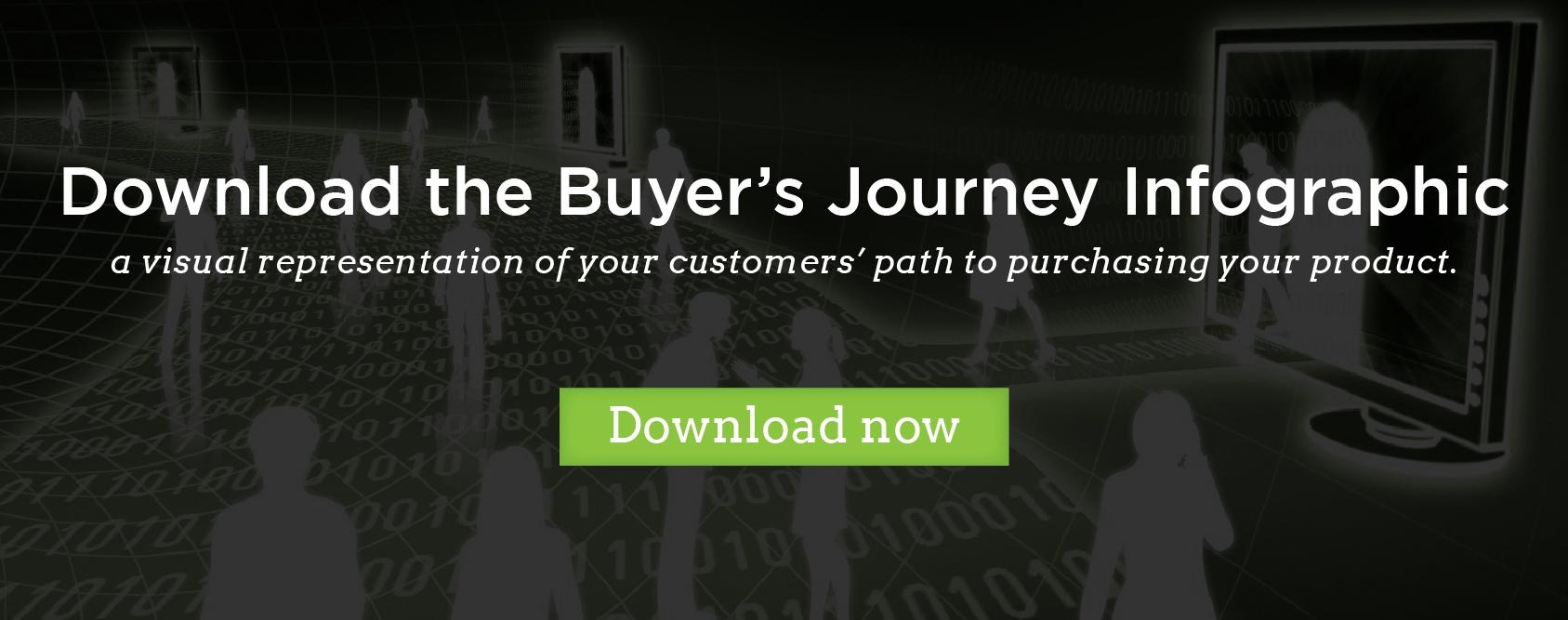
One of the most challenging obstacles faced by online marketers lies in maintaining a path to purchase that leads directly to a specific brand. This is especially true if the path to purchase has the potential to steer the customer into the path of a competitor's product. This is an all-too-common scenario that many online marketers face.
Click to download the "Buyer's Journey" infographic.
If your customers or potential customers click through to view your product, they should be led directly to your products or your own brand of products as a result. This is where the bulk of the challenge lies, but there is a solution.
Understanding the Buyer's Journey
The typical buyer's journey consists of three steps. Within each of these steps, remaining true to your brand and communicating quality and value is critical. Your marketing efforts need to steer the buyer toward a specific destination without distractions that deter from your brand message. The buyer almost always takes these steps when deciding to make the purchase:
- The customer becomes aware of the product. This is a result of good marketing efforts. Targeted online advertising, especially via social media, is the most direct way to steer the customer's path to purchase toward not simply a product, but your branded product. Once you introduce your brand and make a good first impression, the customer then moves onto step two...
- The customer considers buying the product. This is where your brand message needs to be heard loud and clear. It is also where you begin building brand recognition and start creating a trust relationship between the customer and your brand.
- The customer makes a buying decision. However, their decision could be either for or against buying your product. The decision to buy from you is often the result of how you manage the first two steps of their journey, but there is more to it.
All the effort you put into getting people to buy from you is ultimately for nothing if your customers end up in front of your competition at that crucial third step. This is why you need to consider taking the process a bit further, especially if you deal with OEM products. The urgency becomes even greater when dealing business-to-business. Developing long-term relationships with partner businesses hinges on good branding and a focus on your specific brand.
The Big-Box Conundrum
Dealing directly with vendors or large-scale online retailers is a cost-effective means of providing and distributing products, but the economy of it is largely an illusion. Your effort to save money can come at an even greater price when you consider how easy it is for other brands to also target your customers.
It's a largely vicious cycle: You spend the money on advertising, you offer a superior product that is well-branded and well-marketed, but when your customer clicks through, he or she is deluged with other buying options. Will your efforts win out? Much of the time, yes. There is, however, a sizable percentage of people who will get stuck at the consideration stage and ultimately be wooed away by another advertising style, a slightly lower price, and so on.
The Road Less Traveled
The solution to keeping your buyer's path to purchase straight lies in keeping his or her focus on your brand at each step of the buyer's journey. It is time to stop sacrificing sales in the name of savings and take the road less traveled. The buyer's journey can begin and end with your brand if you take this one critical extra step that your competition isn't: develop brand-flow websites that steer the path to purchase directly to your branded products.
What Is a Brand-Flow Website?
Brand-flow websites eliminate cross-selling and comparison shopping by steering the customer directly to a site that deals specifically and exclusively with your brand. The buyer's path to purchase always has your branded site as the destination. All the ad traffic that you generate leads potential customers to your product and nowhere else.
“But statistics show that branded sites tend to get less traffic...”
Yes, that is definitely true, but think of it in terms of per-click conversions. You may get more traffic going through dealer sites, but how much of it gets lost when your customer clicks to investigate a competing product? You did so much work raising awareness and starting the decision-making process, and now the customer is looking at someone else's product. In a way, you just paid for your competition to make a sale!
Yes, you will get less traffic to a branded site, but you will get far more quality traffic. Therein lies the difference.
Less Ebb, More Flow
In summary, brand-flow sites keep the exclusive focus on your brand. They do not allow customers to be steered into the path of a competing product, and they solidify your brand message and identity by eliminating competitors' options from the equation.
Is your business ready to revolutionize its customers’ buying journey?


